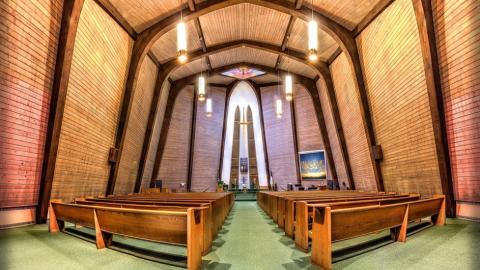Where Do You See Jesus in your Church - Part 1
0 comments
529 views

An acquaintance told me that on his very first day of school as a young child, his mother dropped him off and said, “I wonder where you will see Jesus today.” She continued to say this every single school day until she helped him to move into his college dorm.
“You know,” he said, “there were days in middle school when I rolled my eyes, especially if there were friends within earshot, but that daily wondering has shaped my walk with God more than anything else.”
I’m not surprised. How about you? Imagine if the #1 question that oriented our life was seeking to see Jesus as he lives within you and around you. I wonder where you see Jesus in your church. Is there any question about your church that is more important?
After all, Jesus himself defines the church as the place where he lives. “Where two or three gather in my name, there am I with them,” Jesus declares (Matt. 18:20), and Paul develops this further in two separate teachings, first asking, “Don’t you know that you yourselves are God’s temple and that God’s Spirit dwells in your midst?” (I Cor. 3: 16) and “speaking the truth in love, we will grow to become in every respect the mature body of him who is the head, that is, Christ.” (Eph. 4: 15)
Those who write about the church name the “where does Jesus live” question as congregational culture, which can be described as the invisible set of assumptions, values/priorities, and rewards/penalties that together reveal what truly lives in the church. Paul’s fruit of the Spirit list—love, joy, peace, patience, kindness, goodness, faithfulness, gentleness, self-control—provides a strong starting point for assessing culture. The culture is more true and more powerful than the mission statement on the wall, the plans recorded in the council minutes, and the descriptions on the website.
Every church epistle in the New Testament has two basic themes: (1) I praise God for these specific ways that I see Jesus living in your church. (2) I challenge you to greater faithfulness in these other areas, so that Jesus may live vibrantly there too. All the rest—theological teachings, testimonies, personal encouragements—are essential supports designed to reinforce one or both of these two themes.
The culture may be invisible, but it is expressed through human behaviors that are visible. For the next seven weeks we’ll be looking at seven categories of church activity, and asking the same question for each one: how do we see Jesus living within these behaviors?
In Eugene Peterson’s marvelous study of the book of Revelation, Reversed Thunder, he makes this stunning observation: John sees a majestic, overwhelming vision of the risen Christ in chapter one, a vision so powerful that he falls faint to the ground. But when he turns to see the “loud voice” who is speaking to him, he writes, “I saw seven golden lampstands, and among the lampstands was someone like a son of man…” (Rev. 1: 12-13a). In other words, notes Peterson, John first sees the lampstands (which represent the seven churches), and then he sees Jesus. Jesus lives in the church and chooses to reveal himself through the church.
John sees Jesus living in and among the churches, churches that are—as chapters 2 and 3 make clear—ordinary gatherings of strong and struggling redeemed sinners who go through all the ups and downs that we experience in our churches today.
When is the last time you and other leaders in your church formally reflected on this question, “where does Jesus live in our church?” Have you ever?
Stay tuned...we’ll be pondering this question in specific ways for the next several weeks.
Faith Formation Ministries has a discussion guide for church councils and others in leadership to help groups reflect on this question. If you’d like a copy, contact us at [email protected].
Faith Nurture
Faith Nurture
Faith Practices, Faith Nurture
Faith Nurture
Connect to The Network and add your own question, blog, resource, or job.
Add Your Post
Let's Discuss
We love your comments! Thank you for helping us uphold the Community Guidelines to make this an encouraging and respectful community for everyone.